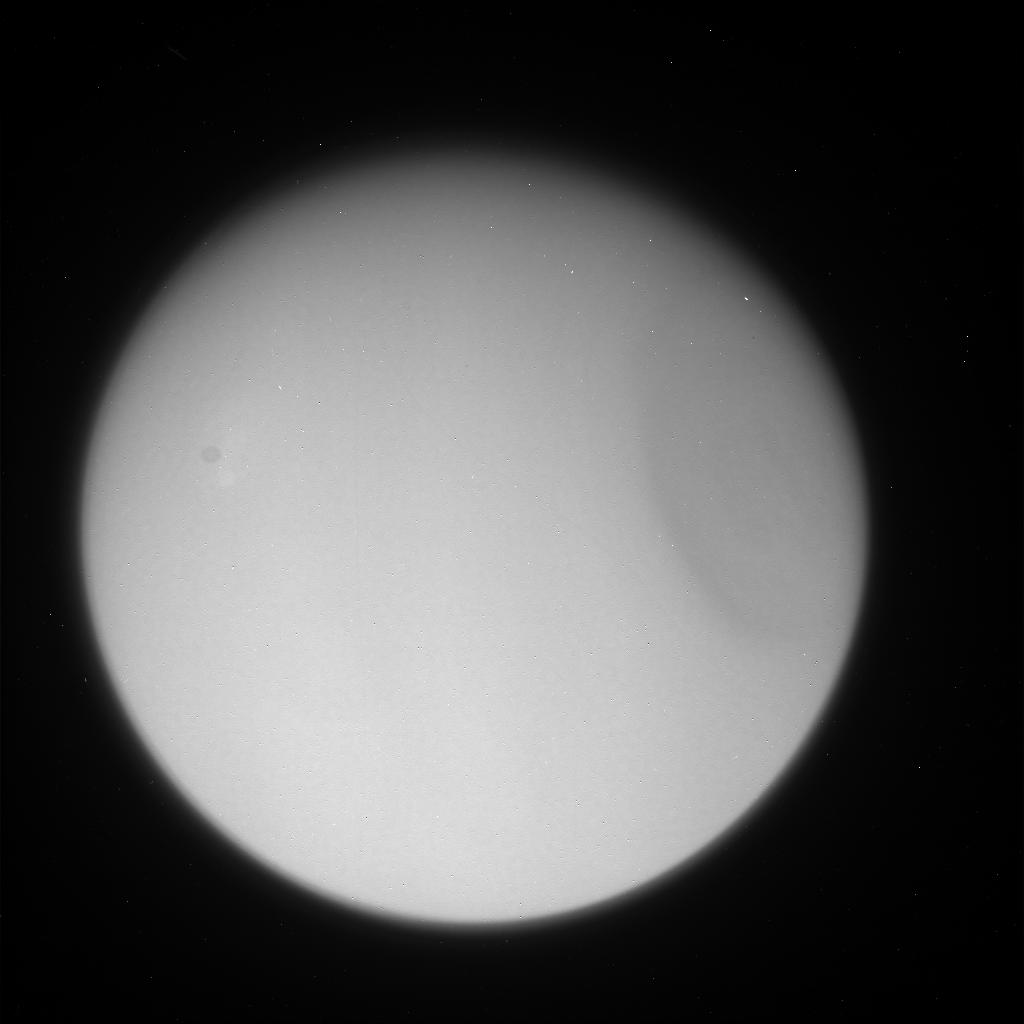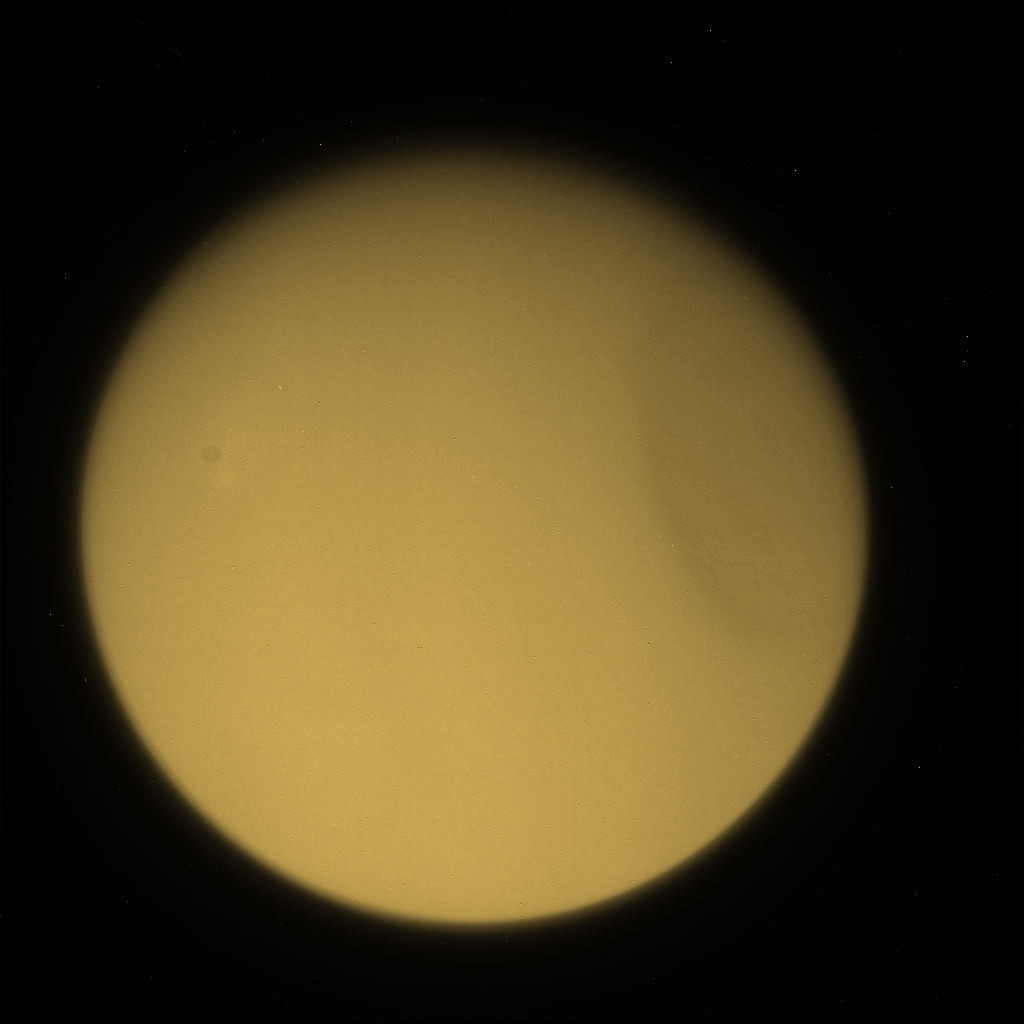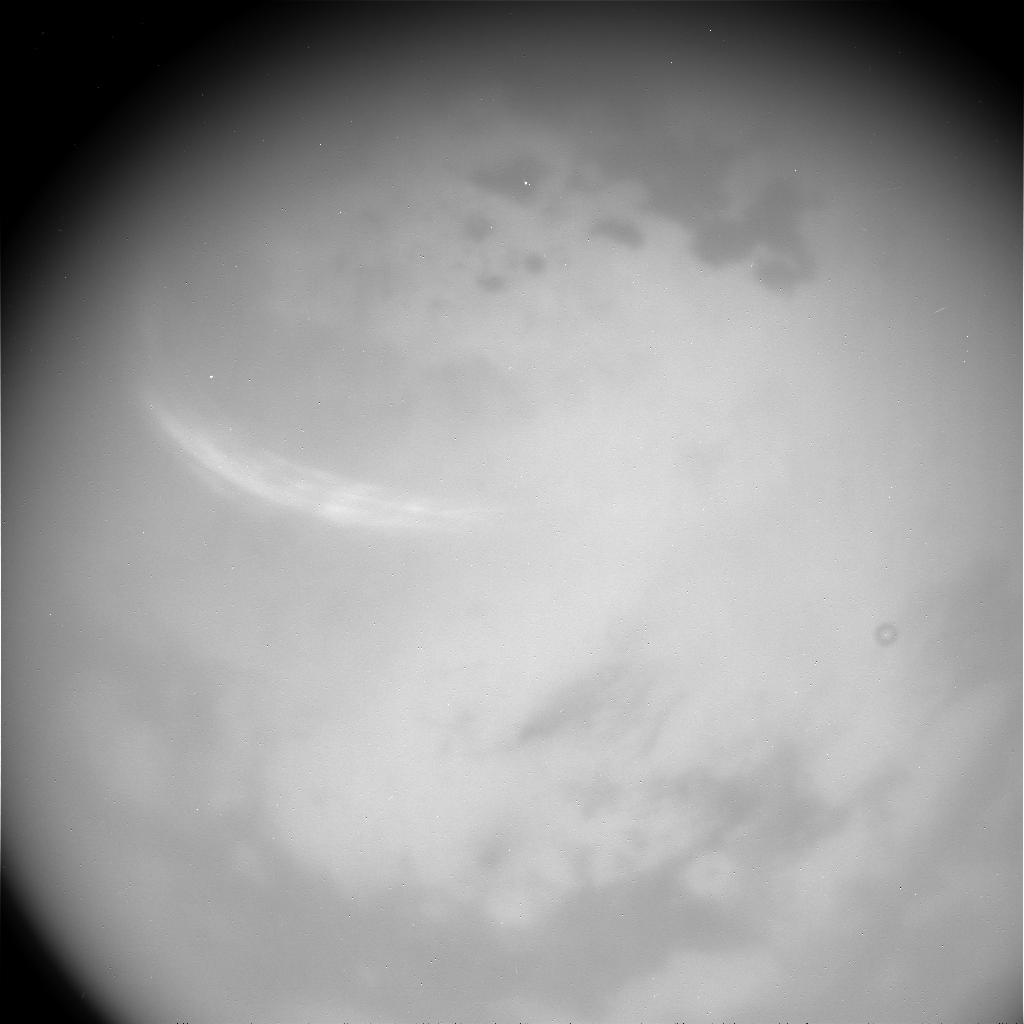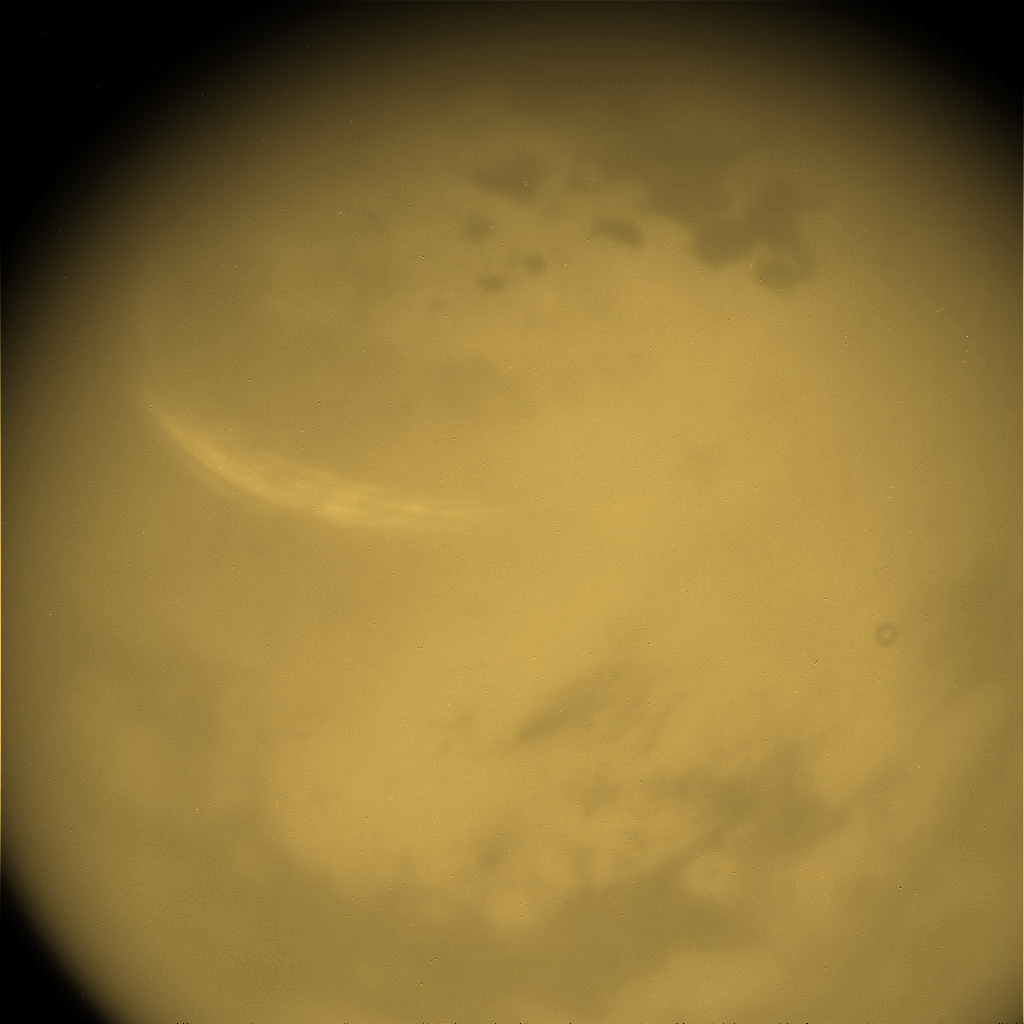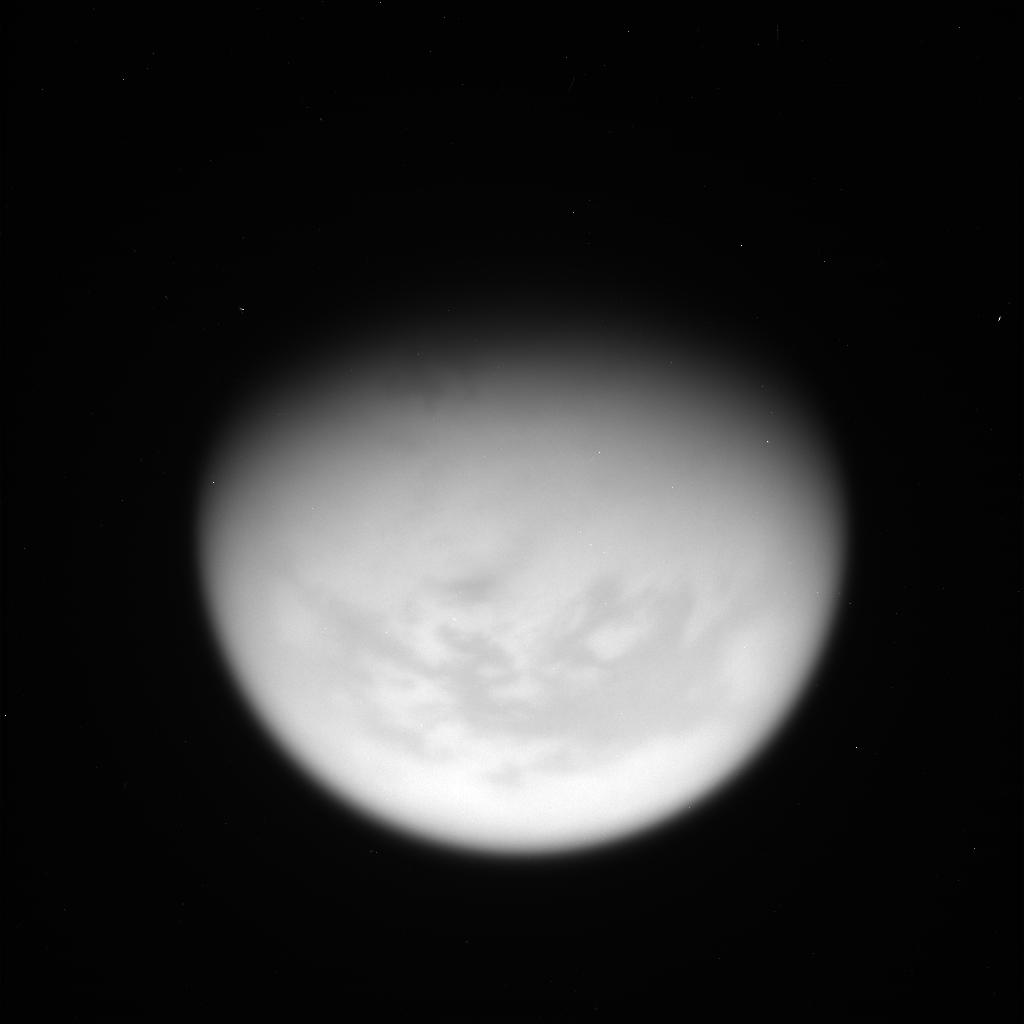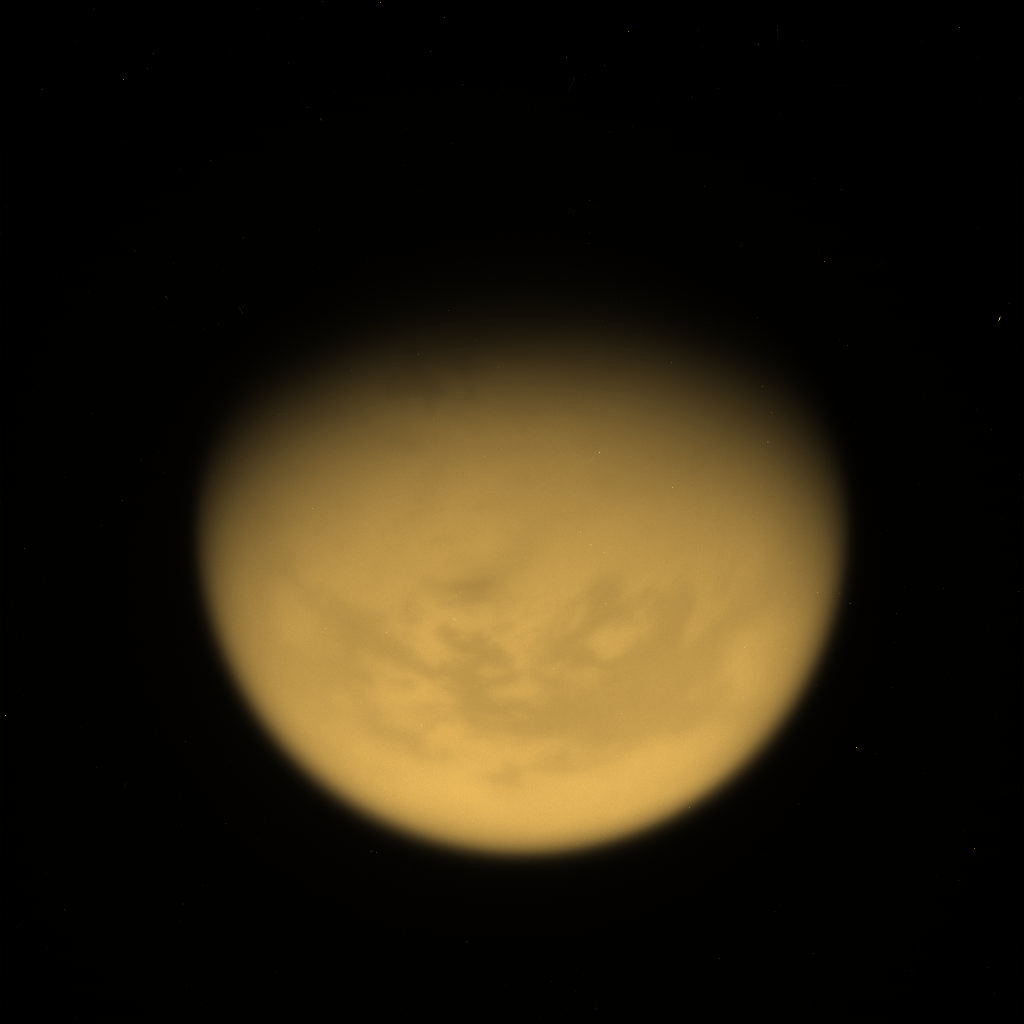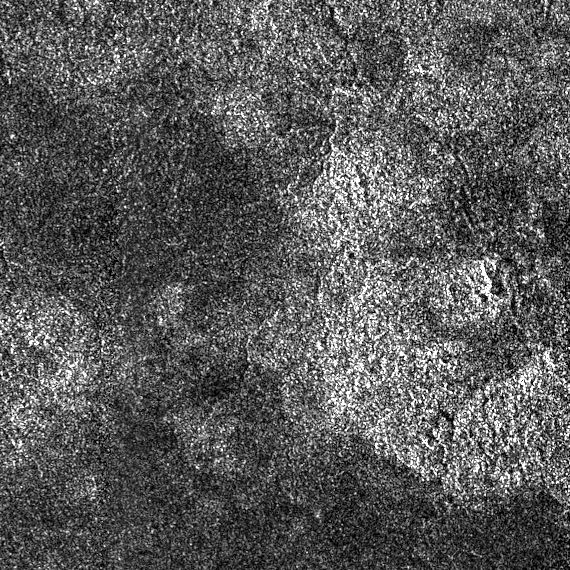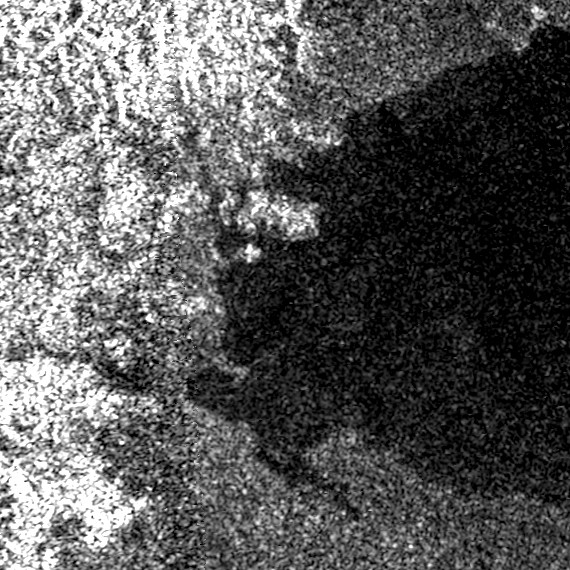|
The image in the upper part of the table represents a raw view of Titan obtained from the Cassini orbiter on March 5, 2016.
The image whose file name is N00256686.jpg was acquired on the basis of the CL1 filter and on the basis of the UV3 filter.
The image had not been validated or calibrated at the time of the observation and a validated or calibrated version of the
original image had to be archived with the Planetary Data System proposed by NASA. The image in the lower part of the table
represents a colorized version of the original image. One can notice a relatively dark polar cap in the right part of the
disk of Saturn's largest moon.
Credit for the original view:
NASA/JPL-Caltech/Space Science Institute.
Credit for the colorization process of the original image:
Marc Lafferre, 2023.
|
